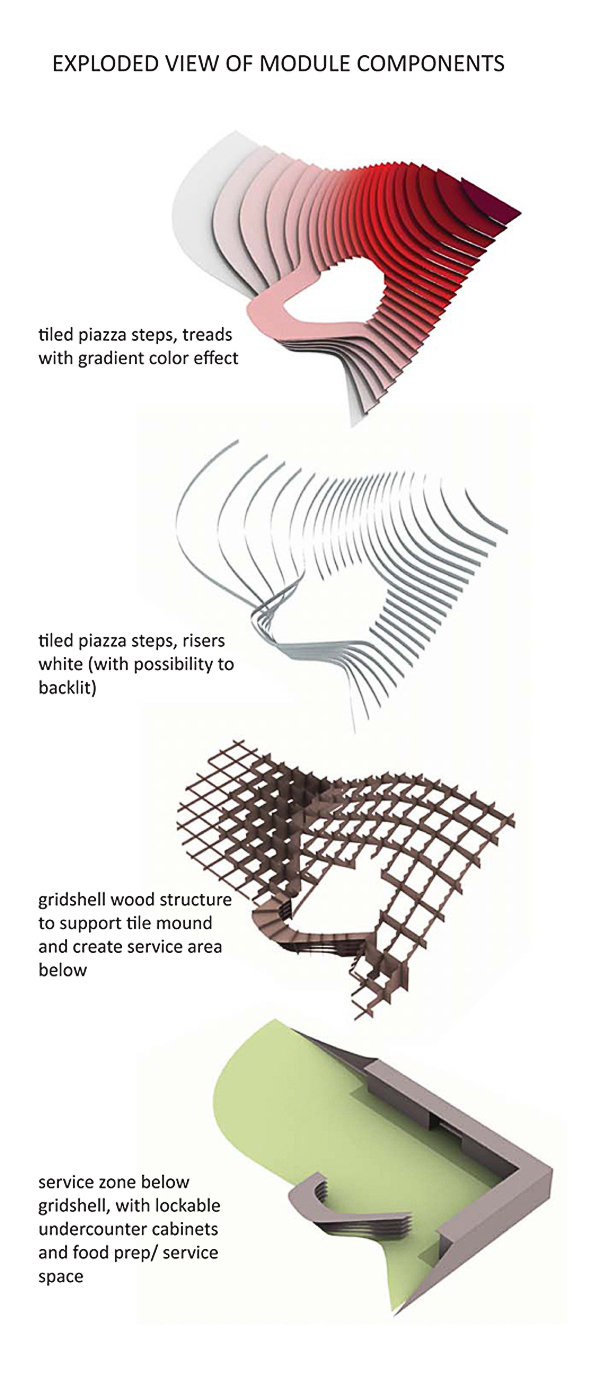
It often happens that the small-scale, programmatically simple design
tasks tap into the basics of the practice and remind of what is the
initial creative act in designing – Asking Questions. To most with
formal architectural education, designing trade show pavilions presents
starting challenges that help solidify their understanding of space. By
returning to questions, small competitions act as a bloodletting
treatment for the current global discourse. These also take on a
didactic role for architecture beginners, reminding them of the
complexity of the design process that can be revisited, but certainly
not avoided by relying solely on the abstract art of mathematics.
The winning proposal for the Ceramics of Italy Competition
is a recognizable, functional and versatile space, achieved by using
the design elements organically and making them part of a clear,
cohesive architectural thought. The project marries archetypal spatial
preoccupations with modern technologies and computational design.
The 3,000 square feet rectangular trade show pavilion comprises
a café, information and reception desks and storage spaces. Lifted at
the opposite corners are two seating areas, reminiscent of Italian
piazzas. These are progressively transformed into information and
reception desks. Layering of the platform into gradual steps allowed the
architects at e+i Studio
to extensively showcase the Italian tile palette through variations in
color. The gridshell wood structure supporting tile mounds creates
service areas below, leaving the space between the slopes for gatherings
and dining.
Piazza Ceramica can be recreated in many different configurations.
The structure, manufactured with CNC and water jet technologies,
consists in producing one module and its mirror counterpart, which can
be combined and reused in multiple assemblies.





-> New issue: "eVolo 04 - Re-imagining the Contemporary Museum, Exhibition & Performance Space"
Источник: http://www.evolo.us/architecture/piazza-ceramica-ei-studio/ | 
